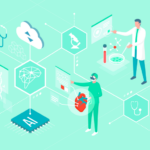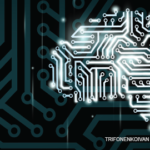 As I was aimlessly browsing the web one night, I noticed a strange ad on the side. It was for a bird feeder powered by artificial intelligence (AI). I don’t know exactly what prompted the Google ad algorithm to show me this particular advertisement, but I was nevertheless struck by it. Against my better judgment, I clicked on it, knowing without a doubt that for the next few weeks, I’ll see nothing but ads about bird feeders whenever I open a web browser.
As I was aimlessly browsing the web one night, I noticed a strange ad on the side. It was for a bird feeder powered by artificial intelligence (AI). I don’t know exactly what prompted the Google ad algorithm to show me this particular advertisement, but I was nevertheless struck by it. Against my better judgment, I clicked on it, knowing without a doubt that for the next few weeks, I’ll see nothing but ads about bird feeders whenever I open a web browser.
After looking through the product specifications, I gained some insight into what the future of rheumatology may look like in a world where even bird feeders are artificially intelligent. So what are the barriers and challenges to artificially intelligent rheumatology clinics? Let’s rheuminate!
Springtime for AI, or Impending Winter?
AI appears to be a modern invention, but the fact is that AI is over 70 years old. Alan Turing, a computer scientist who helped the Allies win World War II, is credited with being the father of AI, although the term itself did not come into use until 1956.1 Since then, AI has moved ahead in a series of fits and starts.
Throughout much of the 1970s and 1980s, AI seemed to experience a series of AI winters, periods marked by significant declines in enthusiasm and funding.2 These downturns followed inflated expectations that outpaced the technology’s capabilities, leading to widespread disillusionment.
History is ever cyclical, but you can imagine my concern that this enthusiasm for AI bird feeders and AI toasters may be presaging another AI winter. The proponents, though, have a great point: Advances in computing power, exploration of advanced algorithms and scalability make it so much easier to sustain artificial intelligence today.
This historical context is crucial because it frames a realistic perspective on discussing AI’s role in rheumatology. AI certainly has the potential to revolutionize rheumatology, but so far, it is only that: potential. Computers are not going to do the heavy lifting to implement themselves into our clinics. It is we, flesh-and-bone humans, who have to create achievable goals based on grounded expectations to ensure AI can be sustained in clinics, labs and beyond.
Demystifying AI
A major reason AI-powered bird feeders even exist is because of the mystique of AI. It’s hard not to argue that it is magic when a machine completes a task that you’ve been working on for hours in a matter of seconds. But it is decidedly not magic.



